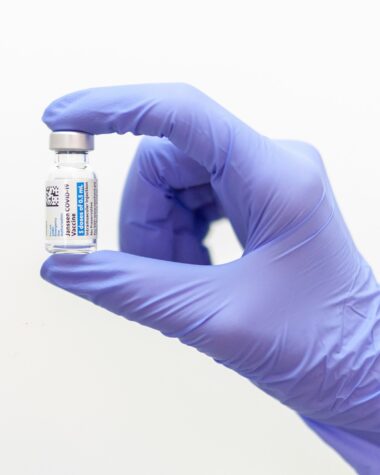AstraZeneca PLC (NASDAQ:AZN) is one of the world’s largest and most influential biopharmaceutical companies, built on a legacy of scientific excellence, innovation, and a global mission to improve health and extend life. Headquartered in Cambridge, United Kingdom, AstraZeneca was formed in 1999 through the merger of Sweden’s Astra AB and the UK-based Zeneca Group, creating a powerful multinational enterprise with a deep pipeline of prescription medicines and a worldwide presence spanning over 100 countries. The company’s core therapeutic areas—oncology, cardiovascular, renal, and metabolic diseases (CVRM), respiratory and immunology, vaccines, and rare diseases—reflect a diversified portfolio that addresses some of the most pressing global health challenges.
Since its formation, AstraZeneca has become a model of modern pharmaceutical evolution, blending deep research capabilities with commercial scale. The company invests heavily in research and development, spending more than $10 billion annually to fuel breakthroughs in precision medicine, biologics, and next-generation therapies. Its global R&D network includes state-of-the-art centers in the United Kingdom, United States, and Sweden, where more than 80,000 employees work collaboratively to deliver treatments that redefine standards of care. AstraZeneca’s robust product lineup includes several blockbuster medicines such as Tagrisso for lung cancer, Imfinzi for immuno-oncology, Farxiga for diabetes and heart failure, and Tezspire for severe asthma. These products not only drive strong revenue growth but also reinforce AstraZeneca’s position as a science-led innovator with real-world impact on millions of patients worldwide.
Under the leadership of CEO Pascal Soriot, AstraZeneca has undergone a remarkable transformation over the past decade, pivoting from a traditional pharmaceutical company to a high-growth biopharma leader with a focus on innovation and sustainable expansion. This strategic reinvention has included a renewed emphasis on oncology, expansion into rare and metabolic diseases, and a bold commitment to long-term growth through pipeline diversification. The company’s forward-looking approach has enabled it to weather industry challenges such as patent cliffs, regulatory scrutiny, and competitive pricing pressures. By maintaining a strong pipeline—now exceeding 190 active projects, including 19 new molecular entities in late-stage trials—AstraZeneca is well-positioned to sustain innovation-led growth in the coming decade.
AstraZeneca’s collaboration-driven culture is another pillar of its success. The company actively partners with biotechnology firms, research institutions, and governments around the world to accelerate discovery and development. Through alliances with companies like Moderna, Merck, and Daiichi Sankyo, AstraZeneca has expanded its expertise in cutting-edge modalities such as mRNA technology, antibody-drug conjugates (ADCs), and gene therapy. Its acquisition of Alexion Pharmaceuticals in 2021 further diversified its portfolio, adding a strong rare disease segment focused on complement biology and expanding its global reach in specialty care. These strategic moves have not only enhanced the company’s scientific depth but also positioned it as a formidable player in high-value treatment categories that promise durable growth.
In recent years, AstraZeneca has also become a key player in global public health initiatives. The company’s pivotal role in developing and distributing the Oxford-AstraZeneca COVID-19 vaccine during the pandemic showcased its ability to mobilize scientific and logistical resources on an unprecedented scale. This experience reinforced AstraZeneca’s reputation as a company driven not only by profit but by purpose—committed to equitable access, sustainability, and corporate responsibility. Through its ambitious environmental and social governance (ESG) goals, AstraZeneca has pledged to achieve carbon neutrality by 2025 and net-zero emissions across its value chain by 2045, underscoring its leadership in sustainable healthcare innovation.
Today, AstraZeneca stands as a cornerstone of the global pharmaceutical industry—financially strong, scientifically dynamic, and politically astute. The company generates more than $54 billion in annual revenue and aims to reach $80 billion by 2030, driven by an aggressive launch schedule of over 20 new medicines. With a strong U.S. presence supported by a $50 billion investment in domestic research and manufacturing, AstraZeneca continues to bridge science and commerce across continents. Its blend of cutting-edge R&D, strategic alliances, and global production capacity ensures its continued influence in shaping the future of medicine. As it forges ahead, AstraZeneca remains steadfast in its vision to transform lives through science, leveraging its legacy of discovery to meet the evolving health needs of billions worldwide.
A Turning Point in U.S. Drug Policy and AstraZeneca’s Market Position
The finalized deal underscores AstraZeneca’s strategic agility amid global pricing reform pressures. The agreement, expected to be formally announced at the White House, represents a cornerstone in the Trump administration’s “most-favored nation” drug pricing initiative, which seeks to align U.S. prices with those in peer economies. Instead of resisting reform, AstraZeneca has embraced the shift — using it as an opportunity to strengthen U.S. relations and expand patient access.
CEO Pascal Soriot’s proactive diplomacy helped position AstraZeneca as a cooperative industry leader rather than an adversary to regulation. By taking a leadership stance, AstraZeneca has avoided the public backlash and policy uncertainty that often follow government-industry standoffs. This cooperative strategy has also reinforced investor confidence, proving that political adaptation can coexist with profit preservation.

CHECK THIS OUT: Corcept (CORT) Skyrockets 1,534% in 10 Years and Immuneering (IMRX) Reports 86% 9-Month Survival in Pancreatic Cancer.
$50 Billion U.S. Expansion Strengthens Domestic Footprint
In alignment with America’s growing emphasis on economic nationalism, AstraZeneca announced a massive $50 billion investment plan in U.S. manufacturing and research infrastructure. This investment reflects both business strategy and geopolitical foresight. By expanding its U.S. presence, AstraZeneca mitigates risks tied to tariffs, international supply disruptions, and regulatory unpredictability abroad.
CEO Pascal Soriot’s joint appearance with CMS Administrator Mehmet Oz in Virginia symbolized more than just compliance — it was a public endorsement of AstraZeneca’s commitment to U.S. innovation and job creation. The new facilities will enhance the company’s production of high-demand medicines, improve logistics for U.S. distribution, and strengthen domestic R&D capabilities for oncology, cardiometabolic, and respiratory therapies.
Direct-to-Consumer Innovation: Discounts Up to 70%
AstraZeneca has also launched a direct-to-consumer digital platform, offering discounts of up to 70% on key drugs like Farxiga and Airsupra. This bold move not only expands patient access but also reshapes how Big Pharma interacts with end users. By cutting out intermediaries and enabling patients to buy directly, AstraZeneca gains both brand loyalty and valuable market data.
This initiative is particularly timely as healthcare consumers increasingly demand transparency and affordability. It demonstrates AstraZeneca’s ability to pivot — using technology and patient-centric models to thrive in a cost-sensitive environment. Analysts view this as a smart long-term play that could strengthen AstraZeneca’s pricing flexibility and competitive advantage across global markets.
Aligning With Trump’s Most-Favored Nation Pricing Framework
Under the administration’s most-favored nation (MFN) pricing framework, drugmakers must ensure that U.S. prices are no higher than the lowest price offered in other advanced economies. While this initially triggered fears of profit erosion, AstraZeneca — much like Pfizer — has adapted strategically. By adjusting international pricing structures and expanding volume in key markets, the company can preserve overall profitability even as U.S. prices moderate.
This approach echoes Pfizer’s September 2025 deal, in which the company agreed to price cuts of up to 85% in exchange for a three-year tariff reprieve. AstraZeneca’s participation in similar negotiations signals its willingness to cooperate without losing leverage. Rather than viewing regulation as a threat, AstraZeneca has transformed it into an opportunity for stronger long-term positioning and favorable political alignment.
Political Cooperation Meets Strategic Foresight
AstraZeneca’s cooperation with Washington highlights a growing trend of policy-corporate alignment within Big Pharma. While the Trump administration’s aggressive trade tactics initially spooked global markets, companies like AstraZeneca recognized the underlying opportunity: proximity to policy decision-making can be leveraged into long-term stability and market access.
By aligning its manufacturing strategy with national interests, AstraZeneca strengthens its U.S. reputation and gains political goodwill — a key intangible asset in an era where government contracts, subsidies, and regulatory approvals often determine market leadership. This balance of diplomacy and business execution is what continues to make AstraZeneca a standout among global peers.
Reimagining Global Drug Economics and Patient Access
If the pricing deal is finalized as reported, AstraZeneca could redefine how global pharma companies balance profitability, politics, and public health. By reconfiguring its revenue structure — lowering costs for Medicaid while adjusting pricing in international markets — AstraZeneca is essentially writing a new playbook for sustainable pharmaceutical economics.
This model not only satisfies political demands but also positions the company as a moral and commercial leader in equitable healthcare access. For patients, especially in lower-income U.S. communities, the impact could be profound: access to life-saving drugs at reduced cost, without compromising innovation.
Market Implications and Investor Sentiment
From an investor perspective, this policy breakthrough could remove a key overhang that has pressured Big Pharma valuations for years. AstraZeneca’s alignment with U.S. regulatory and trade policies ensures stability in its largest and most profitable market. With a diversified drug portfolio spanning oncology, cardiovascular, and respiratory segments — and more than $54 billion in annual revenue — the company has both the financial and operational scale to absorb short-term pricing pressures while expanding its long-term earnings base.
Analysts also note that the deal could accelerate AstraZeneca’s goal of reaching $80 billion in revenue by 2030, especially as U.S. operations become more efficient and politically protected. The company’s proactive compliance stance, coupled with a strong innovation pipeline and major manufacturing investments, provides a compelling case for sustained growth.
Conclusion: AstraZeneca’s Policy Pivot Could Redefine Big Pharma’s Future
AstraZeneca’s reported drug-pricing deal with President Trump represents far more than a regulatory adjustment — it is a strategic masterstroke. By cooperating with policymakers, investing billions in U.S. expansion, and adopting consumer-driven sales models, AstraZeneca is redefining what it means to be a global pharmaceutical leader in the 2020s.
Its actions illustrate how a legacy pharma giant can evolve into a politically aligned, tech-savvy, patient-focused enterprise without compromising on innovation or profitability. As competitors react and governments recalibrate their healthcare systems, AstraZeneca stands at the forefront of a new era — one where science, strategy, and statecraft converge to shape the future of medicine and markets alike.
READ ALSO: Tiziana (TLSA) Surges 143% in 2025 and Immuneering (IMRX) Reports 86% 9-Month Survival in Pancreatic Cancer.








